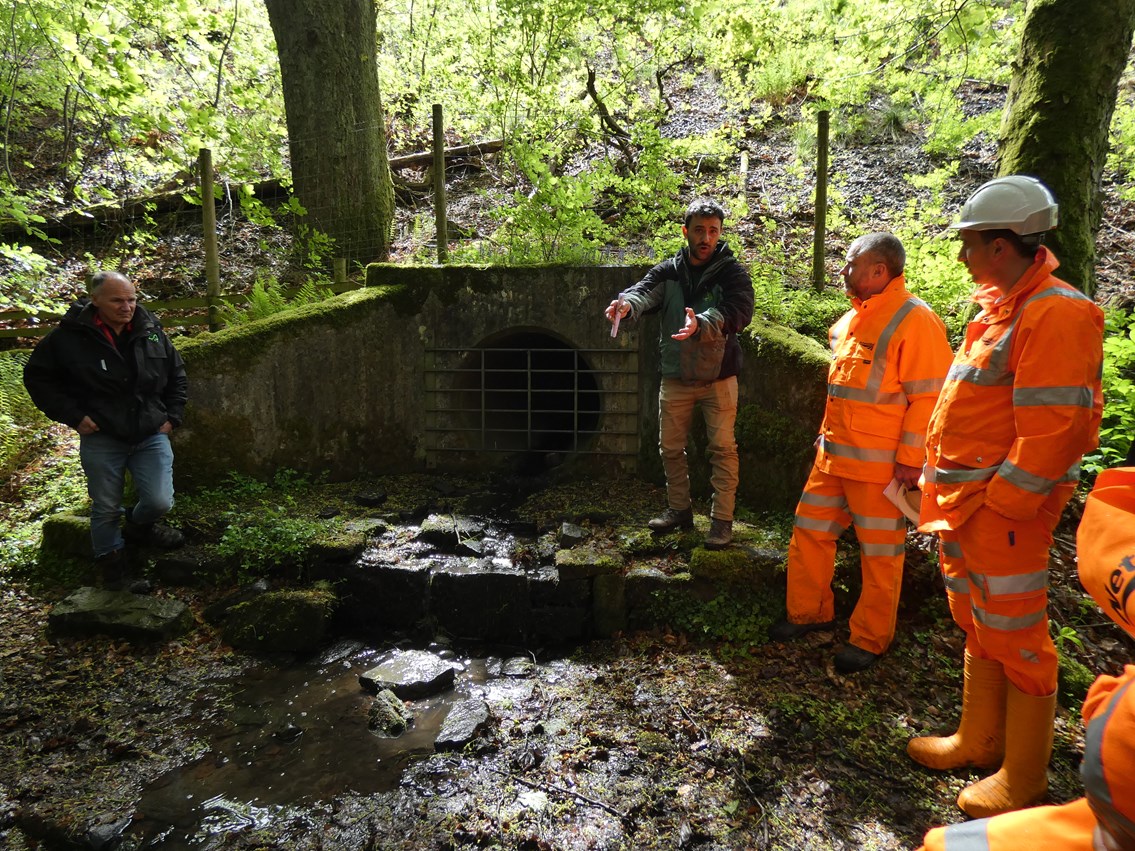Friday 17 Jun 2022
The start of a tree-iffic relationship
- Region & Route:
- Scotland’s Railway: Scotland
Two of Scotland’s largest landowners are seeking ways to work closer together where public forestry and land is adjacent to the country’s rail network.
Teams from Scottish Government agency Forestry and Land Scotland and Network Rail met to discuss ways in which they could work together to manage the risks and challenges that both organisations have on land where they are neighbours.
And the outcome could be financial savings for the taxpayer including improved resilience and reliability of our rail network.
As well as day-to-day operational matters such as track access and supervision and the removal of dead or diseased trees adjacent to operational railway, the discussions also covered integrating work programmes to deal with wider issues such as integrated drainage to improve water management, reducing the risk of slope failure or rock fall.
It is hoped that greater collaboration could lead to a range of positive outcomes in the way both organisations work together and ultimately to generate savings for the taxpayer, a safer more efficient railway and more effective management of adjacent forestry.
For passengers, particularly on our scenic railway routes, this could also offer the potential to increase the enjoyment of journeys by improving key views through strategic planning and management of trees beyond the railway corridor.
The two landowning organisations met at Forestry and Land Scotland’s Dunkeld base to hear from a range of speakers and to see first-hand different sites where mutual interest is opening up the potential of joint working.
Jonathan Callis, senior asset engineer for Network Rail Scotland commented: “Where we have two large landowners with so many areas of mutual interest, there is real value in taking a step back from the day-to-day interaction to look at what we can be doing better, different or more efficiently.
“Gaining an insight into the other’s operational challenges and areas of experience and expertise will lay the foundations for closer working relationships that will help avoid incidents and costs and to better utilise resources.
“Government departments with areas of mutual interest should be talking more like this. It is sensible to know and understand where even little changes in the way we both operate, can have a big impact. It matters as we are both funded by the Scottish taxpayer and if we can do things more efficiently there is a fiscal benefit as well as potential to improve resilience across both organisations.”
Dave Pool, FLS’ National Utilities Manager, said; “It was really useful to meet with the teams at Network Rail to discuss our common tasks and common interests.
“We have much we can share in terms of knowledge and expertise, and it was good to note that safe working practices are a priority for both organisations.
“There is clearly a lot of benefit to be had from working together. For example, Network Rail teams might use our forest road network to get to remote rural locations in emergencies, or to deliver or remove materials, and we might be able to find ways to safely access valuable crops that are close to railway lines.
“The discussions have been very informative for both organisations and seeing things from the railway perspective will certainly help to inform our future planning processes and forestry operations.”
With further meetings planned in different regions across Scotland, it is hoped that a Memorandum of Understanding (MOU) can be developed to clearly define and agree roles and responsibilities across the operational scope of both organisations.
Notes to Editors
Notes to Editors
Forestry and Land Scotland / Network Rail - Areas of mutual interest
Felling and removal of large trees which pose a safety risk to the operational railway.
Management of drainage assets which pose a risk to both parties.
Approaches to land management, tree risk and site clearance.
Ways to enable the railway corridor and productive forest operations to efficiently co-exist.
Sustainable management of emerging risks from beaver activity.
Priorities of forestry site management and harvesting methods.
Key priorities for both organisations both locally and strategically.
Cooperation in emergency situations and better day to day working arrangements.
Drainage and geotechnical management and better joint working.
Contact information
Passengers / community members
Network Rail national helpline
03457 11 41 41
Latest travel advice
Please visit National Rail Enquiries
Journalists
Network Rail press office - Owen Campbell
NR Press Office 0141 555 4108 / 07515 617073
Owen.Campbell1@networkrail.co.uk
About Network Rail
We own, operate and develop Britain's railway infrastructure; that's 20,000 miles of track, 30,000 bridges, tunnels and viaducts and the thousands of signals, level crossings and stations. We run 20 of the UK's largest stations while all the others, over 2,500, are run by the country's train operating companies.
Usually, there are almost five million journeys made in the UK and over 600 freight trains run on the network. People depend on Britain's railway for their daily commute, to visit friends and loved ones and to get them home safe every day. Our role is to deliver a safe and reliable railway, so we carefully manage and deliver thousands of projects every year that form part of the multi-billion pound Railway Upgrade Plan, to grow and expand the nation's railway network to respond to the tremendous growth and demand the railway has experienced - a doubling of passenger journeys over the past 20 years.
Follow us on Twitter: @networkrail
Visit our online newsroom: www.networkrailmediacentre.co.uk

